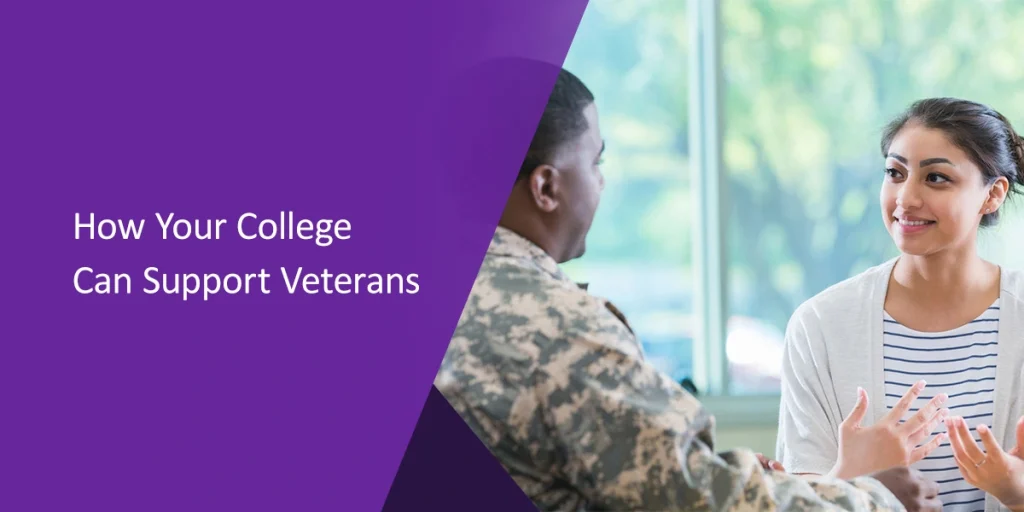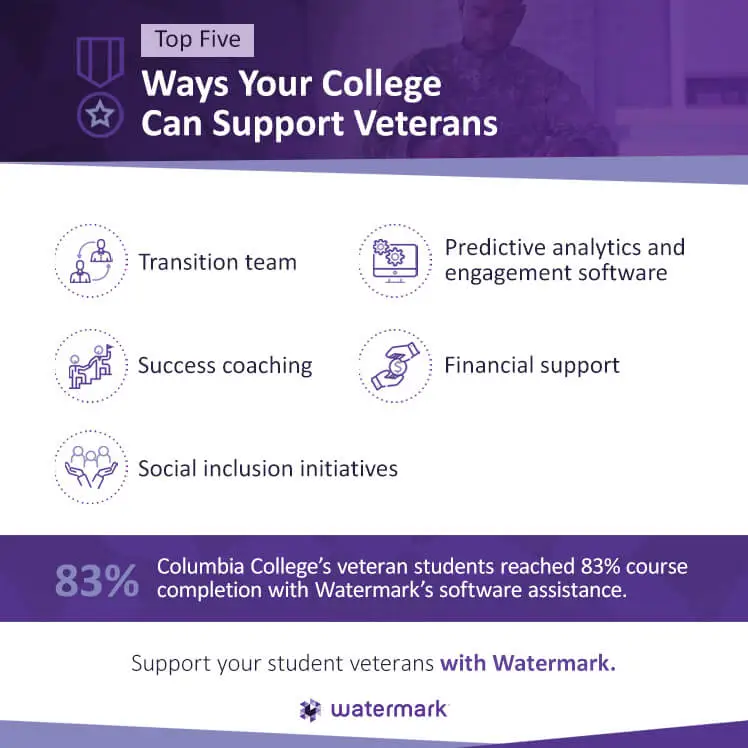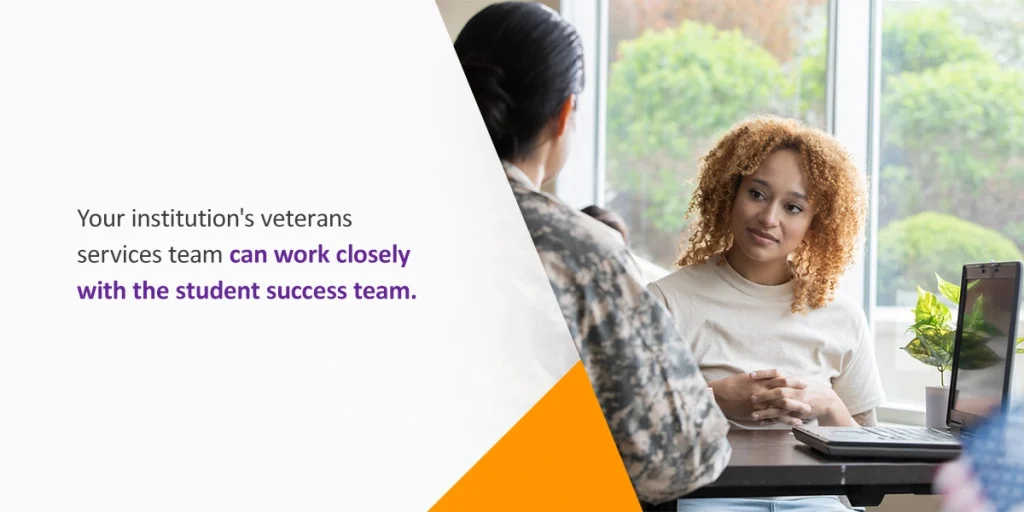




Veterans Day, observed in the United States annually on November 11, commemorates the unofficial end of World War I, when the Allied nations and Germany agreed to a temporary ceasefire. This armistice went into effect on November 11, 1918 — on the eleventh hour of the eleventh day of the eleventh month. The holiday is intended “to honor America’s veterans for their patriotism, love of country, and willingness to serve and sacrifice for the common good.”
About 18 million U.S. adults are veterans, according to the U.S. Census Bureau. As they transition out of active military duty, many veterans seek ways to succeed outside of a military environment, and college is often a great place to do so. Many veterans take advantage of the military’s G.I. Bill, a veteran benefit that, since 1944, has helped veterans fund college, graduate, or training school. Many veterans begin their academic careers at the college level, making it integral for institutions to support veterans through their academic endeavors.
Choosing to pursue a degree in college or university often seems like the right decision, especially for veterans who want to succeed outside of the military, but it can be intimidating. Some veterans might find the support or tools offered at higher education institutions to be inadequate, leading to many dropouts or incomplete degrees.

How universities and colleges support veterans can ensure a higher rate of academic achievement and success from these students. Here are the top five ways that colleges can support their veteran student population.
Many veterans have been out of the academic setting for quite some time. They may have difficulty concentrating, adjusting to new roles, and assimilating with younger students. Veteran students who work with military transition teams at an academic institution have the opportunity to feel more connected to the campus community and what it has to offer.
Helping veterans transition into a new academic environment may look different for every higher education institution. A military transition team can assist with various roles with the right kind of enhanced training. Institutions can also use a veterans advisory committee or social group to look at how they support veteran students.
As long as higher education institutions continue to develop veteran-friendly programs and policies, they can support students’ needs and anticipate what services will benefit veterans the most.
Oftentimes, higher education institutions have difficulty identifying students that may be at risk or struggling with challenges both inside and outside of the classroom. Predictive analytic software, such as Watermark Student Success & Engagement, allows colleges to accurately measure and determine why students may be struggling and, most importantly, if they are at risk of not completing their courses and persisting to the next term.
Engagement software, such as Watermark Student Success & Engagement, can then give academic support staff an easy way to reach out to at-risk veteran students, identify the issues that may prevent them from succeeding, and help develop strategies to address those issues.

It is widely accepted that engaged students are more likely to reach academic success. Student success coaches are an important way higher education institutions can support student veterans. By building and nurturing relationships with veteran students, success coaches can help identify issues that the veteran might be facing within and outside of the academic setting and offer solutions for how to resolve those issues.
Your institution’s veterans services team can work closely with the student success team. Partner on various student retention programs and include each team member in directing veterans to internal and external resources that might be helpful.
While G.I. Bill benefits can bring much-needed tuition support to veteran students, it doesn’t always cover all of the ways in which veterans need financial support while attending college. Higher education institutions that work with veterans to help ease their financial struggles find that those students have a higher chance of academic success.
Talking directly with students about their personal financial struggles can pinpoint what areas need assistance. Some veterans might not know how they will pay for food until their next payment from the VA. Institutions can assist veterans with food needs through meal plans or food programs.
You can also connect veterans with local shelters that will provide additional food needed. However veterans are struggling financially, finding specific and actionable ways to help students ensures they continue to achieve their academic goals without the stress of outside factors.
According to the U.S. Department of Veterans Affairs, 15% of student veterans are traditional college-age students. Many veteran students are between the ages of 24 and 40. This can result in veteran students feeling more isolated from their peer student groups.
Many student veterans might feel out of place among other students, so finding accepting spaces and opportunities for socialization might be more difficult. Older veterans interacting with younger students might feel a disconnect, whether due to different life experiences or simply because they’re different ages.
Higher education institutions that work to make veteran students feel welcomed and included in the social fabric of the college community are likely to find their veteran students more engaged, both academically and socially.
Student veterans begin their academic careers seeking what all students seek: new opportunities, increased knowledge, and preparation for a successful career outside of the military. Higher education institutions that connect, predict, and engage with veteran students are able to support veterans in ways that help them during their years on campus and far into the future.
Watermark has provided colleges and universities with the tools and services they need to better support veterans at their institutions. Various types of higher education institutions can use our reliable analysis software, measurement tools, and data collection services to make informed decisions based on research. Contact us today to speak to a representative or request a demonstration online.






























































































































































































































































































































































































Submit this form to schedule a meeting with one of our reps to learn more about our solutions. If you need customer support instead, click here.

